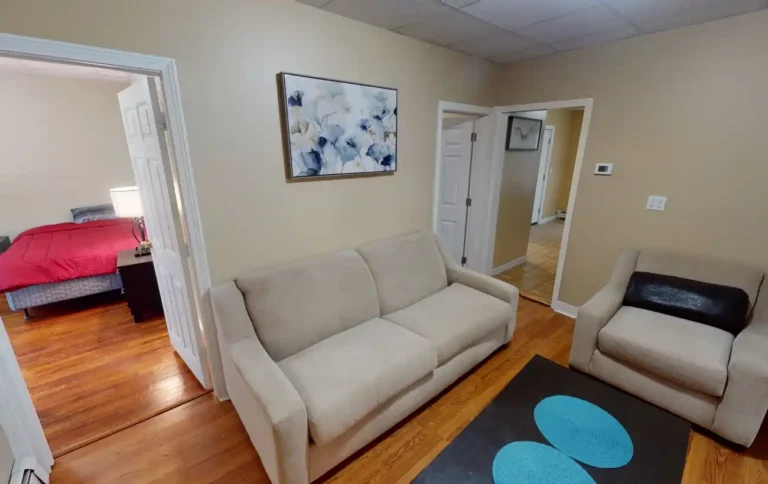
When you’re looking for a sober recovery home, be sure to ask what’s Drug rehabilitation included in the monthly rate and what is extra. Some examples of additional services may include transportation to appointments, recovery coaching, meals and gym memberships. But when considering some of the services offered, make sure they’re services that help support your sobriety. Part of living in recovery is “showing up for life,” meaning doing things for yourself that make you a successful, contributing member of society.
Significance of the Study
In an email Tuesday, CSC did not confirm the accused lived at the community residential facility — more commonly known as a halfway house — but did say the shooting happened at the home. The charges of wire fraud and wire fraud conspiracy provide for a sentence of up to 20 years in prison, three years of supervised release and a fine of up to $250,000. The charge of making false statements to a mortgage lending business provides for a sentence of up to 30 years in prison, five years of supervised release and a fine of up to $1 million.
Best Online Premarital Counseling Services Of 2024
Halfway houses, also known as sober re-entry programs, tend to be more structured. Other times, they function as a more intensive =https://ecosoberhouse.com/ residential facility, meaning that there is consistent recovery programming, requirements, and staff present in the house. Over the years, sober living houses have evolved to meet the needs of those in recovery. There are also plenty of independent sober living houses that have not changed their protocols much since the late 1940s when these residences came to be.
What Are The Benefits Of Sober Living?
- Between January 2019 and July 2020, they collected more than $170,000 in rent payments from the trust, according to the indictment.
- At admission, nearly all residents are eligible for some type of government assistance (e.g., general assistance or social security disability) and use those funds to pay SLH fees.
- Something important to note is that sober living houses are not the same as halfway houses.
- Typically, the cost is about the same as living in a modest apartment or home.
Sober living houses started in the 1830s when temperance movements promoted “dry hotels” or sober places to live. But it wasn’t until the 20th century that they became the structured, supportive homes we see today. In the 1950s, groups like Alcoholics Anonymous (AA) and Narcotics Anonymous (NA) highlighted the value of group support and sober housing, leading to the growth of sober living houses across the U.S. Research shows that people who live in sober living houses are less likely to relapse than those who move straight from treatment to living on their own.
- Organizations that offer SLH scholarships include CLEAN Cause Foundation and Ben Meyer Recovery Foundation, per Dr. Kennedy and Clark.
- Even so, rent can vary greatly, with some rooms available from $500 up to $900 or more a month.
- Peak Density is the number of days of any substance use (i.e., any alcohol or drug) during the month of highest use over the past 6 months (coded 0-31).
- Overall, both sober living homes and halfway houses can provide a supportive and safe environment for individuals in recovery to build a foundation for a healthy and fulfilling life in sobriety.
- The risk of relapse when someone leaves addiction treatment is particularly concerning.
Our work on identifying and describing these residents with worse outcome is continuing. The study design used repeated measures analyses to test how study measures varied over time. Because the two types of houses served residents with different demographic characteristics, we conducted disaggregated longitudinal analyses for each. For a more complete description of the study design and collection of data see Polcin et al. (2010), Polcin et al. (in press) and Polcin, Korcha, Bond, Galloway and Lapp (in press).
Characteristics of Sober Living Houses

As such, sober living houses serve as a space to transition into a life without addiction, developing tools and community while getting used to the demands of daily life. Sober living homes are not for everybody; some people may need to go through detox or rehab before they can successfully live in a sober environment. However, these homes provide a supportive place to transition from an addictive lifestyle to one of sobriety and responsibility. People who have gotten sober and want to stay that way should consider moving into a halfway house or other group home dedicated to sober living. Living in this type of home can aid sobriety and make it more likely that recovering addicts will remain in recovery for the long term. Also like other sober-living environments, halfway houses generally have systems in place to keep residents sober, and drugs tests are usually administered to monitor for any substance use.
Best Online Therapy Services In 2024: Tried And Tested

Cleggett’s company, A Vision from God LLC, kept close to $52,000 of that money and gave the rest to the client. In 2017, the Globe and STAT investigated Cleggett’s alleged role in a practice called “brokering,” in which addicted young people were recruited to travel from Massachusetts to questionable drug rehab centers in South Florida. Cleggett was the founder of the sober home business A Vision From God LLC (AVFG). Established in November 2016, AVFG owned and operated sober homes in Boston, Wakefield, Quincy and Weymouth under trade names including Brady’s Place, Lakeshore Retreat and Lambert House. In a recent analysis of CSTL residents we looked at psychiatric severity as a predictor of alcohol and drug outcome using growth curve models (Korcha et al (2010). We found that a subgroup of about a third of the residents had significantly higher psychiatric severity than other residents and had significantly worse outcomes.

Costa Mesa’s sober living rules can help, rather than harm, recovering addicts, appeals court says
Some programs created halfway houses where clients could reside after they completed residential treatment or while they Sober House attended outpatient treatment. Many individuals attempting to abstain from alcohol and drugs do not have access to appropriate housing that supports sustained recovery. Our study found positive longitudinal outcomes for 300 individuals living in two different types of SLHs, which suggests they might be an effective option for those in need of alcohol- and drug-free housing. Improvements were noted in alcohol and drug use, arrests, psychiatric symptoms and employment.
Sober Living Homes and Halfway Houses Near Me
Residents may choose to engage in community support groups, counseling, and anything else to help them stay sober. Sober living is just like it sounds, a place to stay where you’ll have a supportive community and can start your new life free from alcohol or other drugs. Residents in sober-living homes commit to abstaining from substance use while participating in outpatient programming or after completing inpatient drug rehab. A sober living house is a peer-managed home designed to help people maintain sobriety. This is achieved through required sobriety, recovery group attendance, and household participation. Those who live in these houses rent rooms indefinitely and live a life in accordance with their responsibilities, like work and school.
Leave a Reply